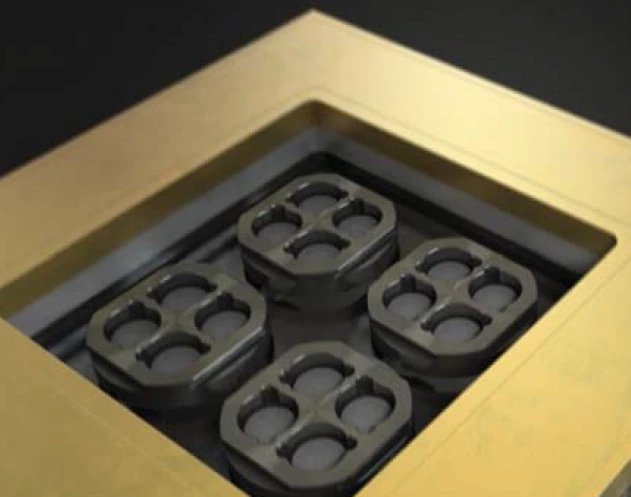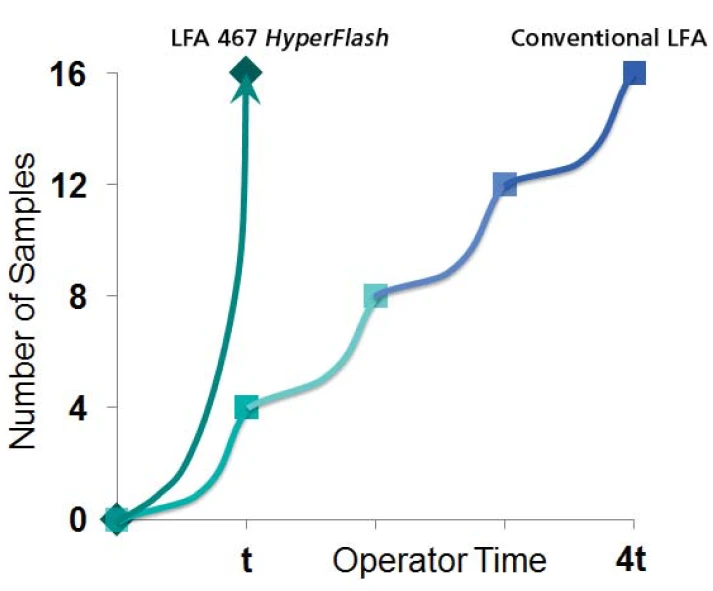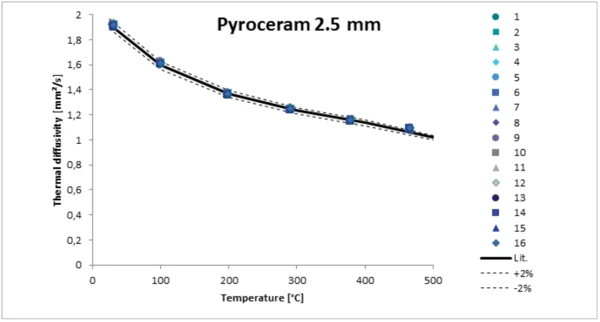Introduction
The design of new materials is a challenge for many scientists, as is the refinement of existing materials for the optimization of specific properties. These challenges cannot be met unless one is accrately informed about two fundamental thermal properties: Difusividad TérmicaThermal diffusivity (a with the unit mm2/s) is a material-specific property for characterizing unsteady heat conduction. This value describes how quickly a material reacts to a change in temperature.thermal diffusivity and Conductividad TérmicaThermal conductivity (λ with the unit W/(m•K)) describes the transport of energy – in the form of heat – through a body of mass as the result of a temperature gradient (see fig. 1). According to the second law of thermodynamics, heat always flows in the direction of the lower temperature.thermal conductivity. One precise, reliable and elegant measurement solution is the Flash Method. It allows for the characterization of low- and high-conductivity materials from cryogenic to elevated temperatures. It has been proven as a reliable, non-contact and direct measurement method in many application areas including polymers, metals and refractories. Meanwhile, the demand for high sample throughput has become increasingly important.
High Sample Thoughput of the LFA 467 HyperFlash®
The LFA 467 HyperFlash® by NETZSCH is able to measure 16 samples within one turn (same heating rate). The sample changer for up to 16 samples is presented in figure 1.
The total measurement time is drastically reduced due to the fact that the heating and cooling processes can be carried out for all samples at the same time.
Figure 2 compares the measurement time of the LFA 467 HyperFlash® and to that of an LFA which can only handle up to 4 samples. The higher sample throughput of the LFA 467 HyperFlash® can be clearly seen.
In addition, it is easy to program the LFA 467 HyperFlash® for overnight measurements. The unit can be operated for many hours without user intervention thanks to the automatic parameter optimization.


In figure 3, an example for the high sample throughput and accuracy of the LFA 467 HyperFlash® is displayed. Sixteen Pyroceram samples (2.5 mm thick, 12.7 mm in diameter) were measured here in one run from room temperature to 500°C. Evaluation of the Difusividad TérmicaThermal diffusivity (a with the unit mm2/s) is a material-specific property for characterizing unsteady heat conduction. This value describes how quickly a material reacts to a change in temperature.thermal diffusivity shows a maximum deviation from literature data of only ±2%.

Cooling Systems
Liquid nitrogen devices additionally improve the sample throughput by achieving rapid cooling times. Such devices allow for measuring temperatures as low as -100°C. The available cooling systems for the furnace and the infrared detector can optionally be equipped with liquid nitrogen refill systems to guarantee long measurement times without interruption.
Conclusion
The LFA 467 HyperFlash® offers high sample throughput, due to the fast furnace control and the automatic sample changer for up to 16 samples. Precise results can be achieved, irrespective of the sample position within the tray and without operator intervention, making this LFA an optimum tool in quality control as well as in research and development.